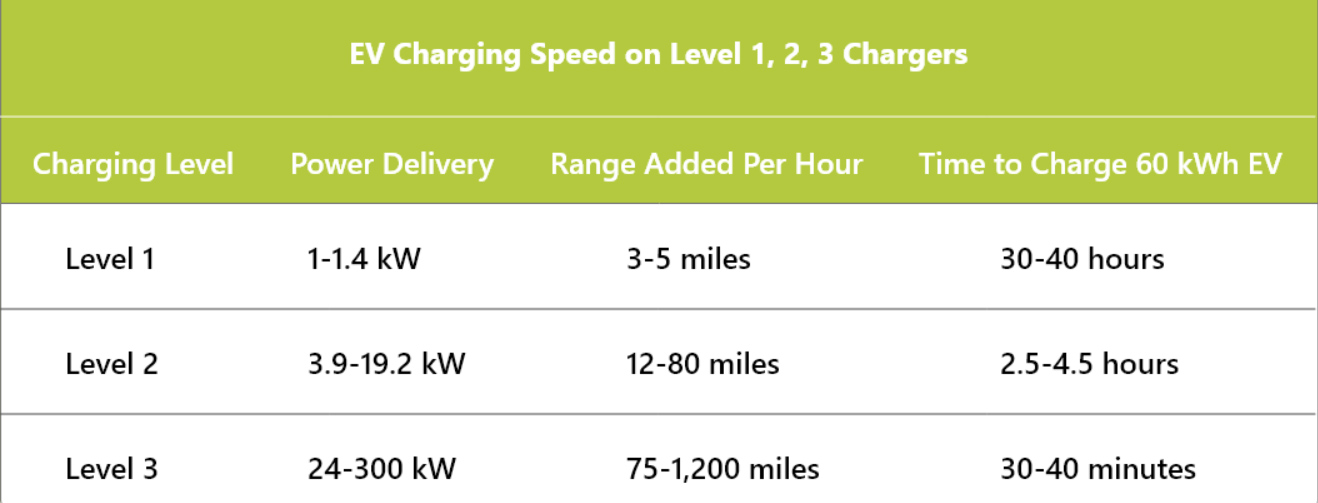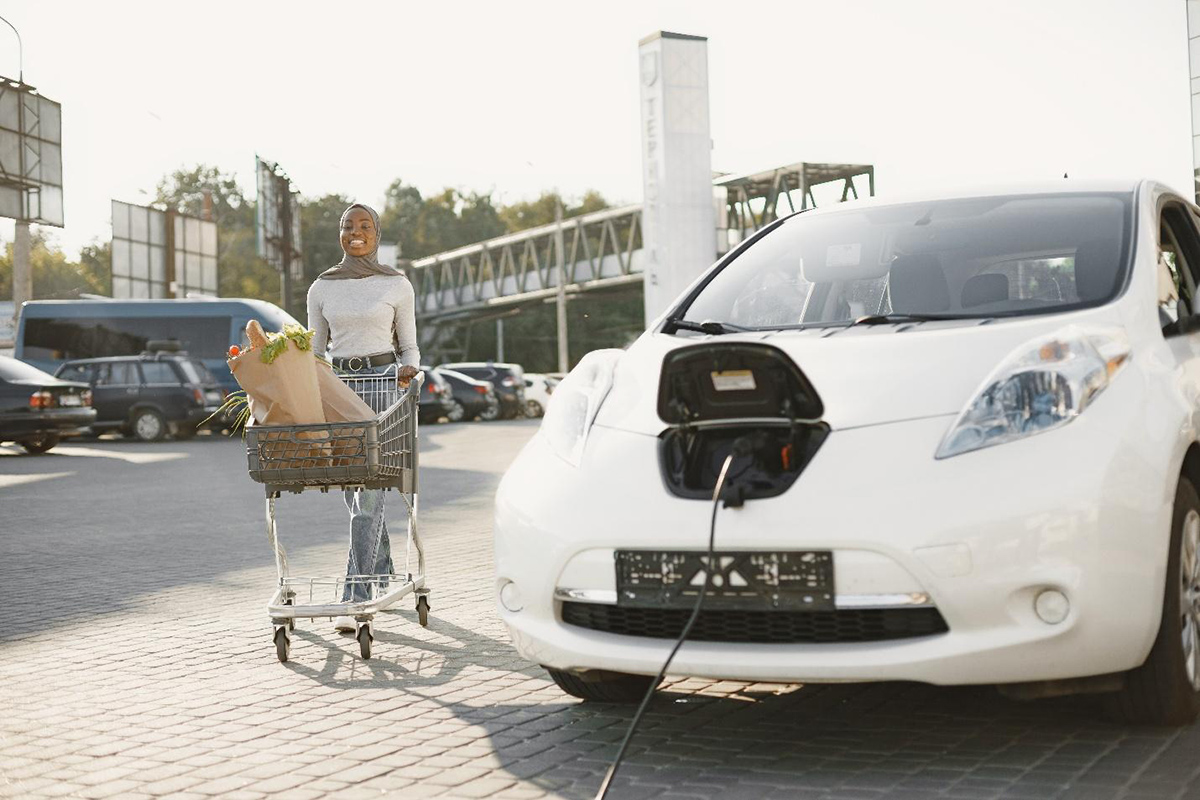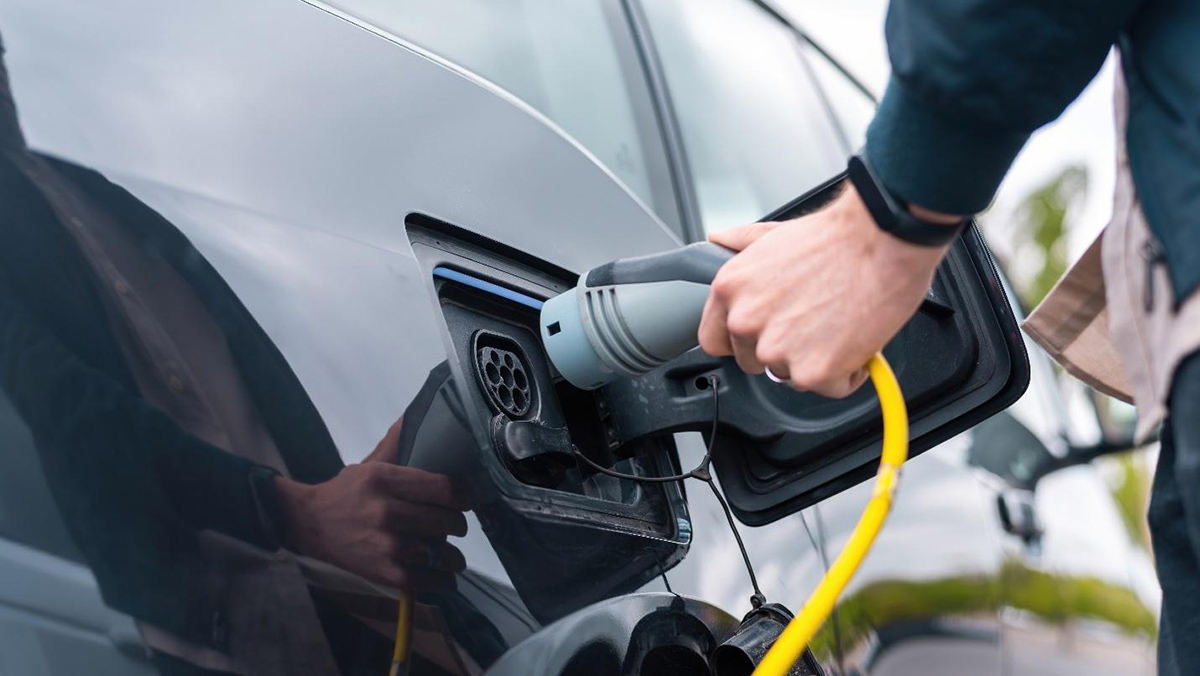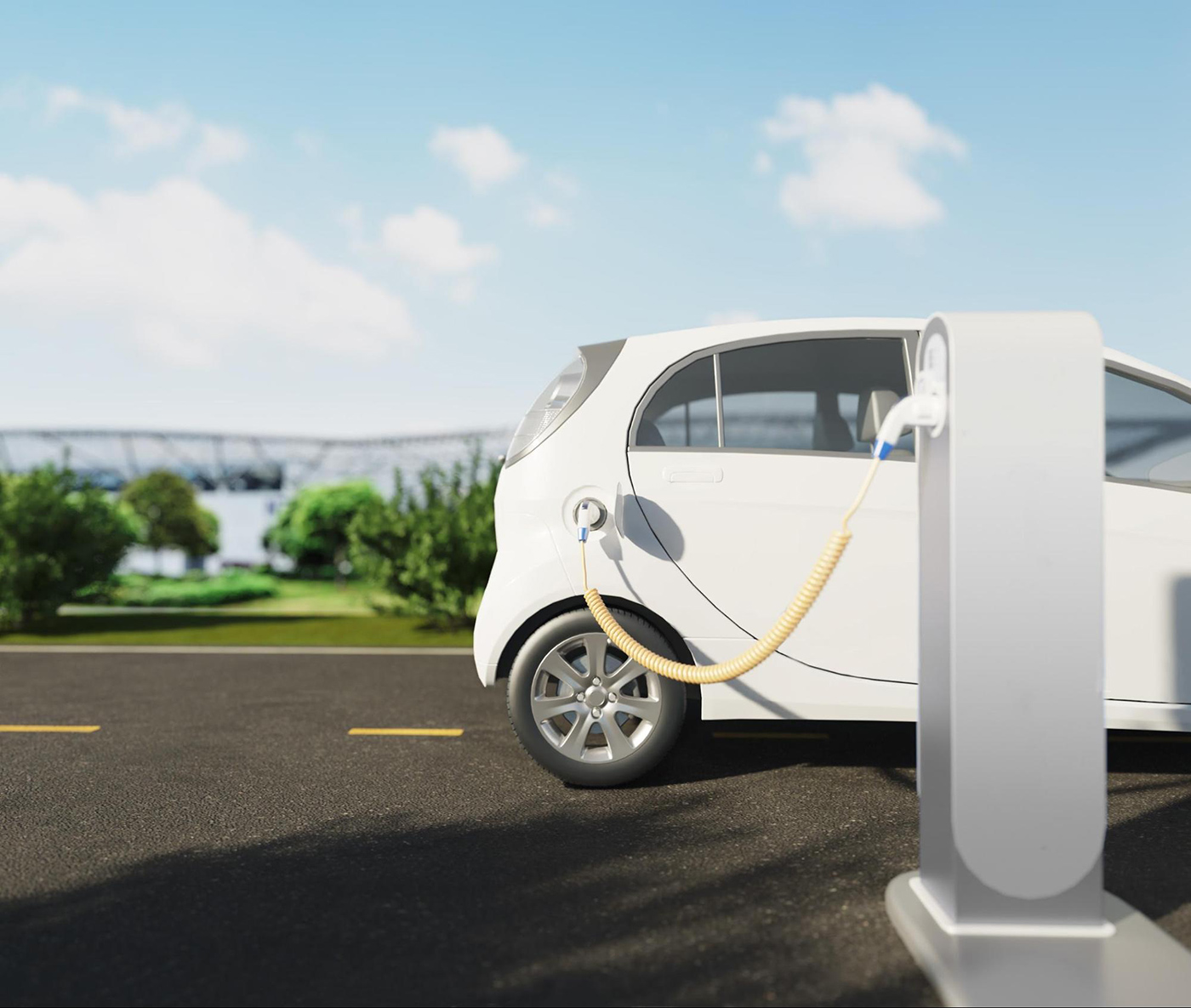Summary
EV charging points give businesses unique opportunities to improve their reputations, contribute to environmental protection, and create new revenue streams. This article provides a comprehensive guide on how to achieve this.
Table of Contents
Introduction
Electric vehicles (EVs) have been hailed as the future of technology. Still, not enough attention has been given to the technology that will make all the difference – electric vehicle charging points.
With the federal government setting ambitious targets for the phasing out of internal combustion engines, businesses are now recognizing the need to adapt and invest in critical charging infrastructure, which helps put their brand in place to reap the benefits of increased EV adoption.
However, setting up EV charging stations can be challenging. This article delves into the different types of EV chargers, including DC fast chargers, and provides a comprehensive guide to help you set up an efficient and reliable station.
Let’s begin.
Understanding Electric Vehicle Charging Points
Electric vehicle adoption is accelerating faster than expected. This accelerated adoption results from government incentives, increased vehicle choices, and a cultural shift to clean energy to prevent the environment. However, there’s still a learning curve when it comes to EV charging.
What Are Electric Vehicle Charging Points?
Electric vehicle charging points are also known as electric vehicle charging stations. They are facilities that provide the electrical energy needed to recharge electric vehicle batteries. These stations are designed to safely and efficiently transfer electrical energy from the power grid to the EV’s battery.
Benefits of Installing EV Charging Points for Businesses
1. Increased Revenue
Organizations can generate additional revenue through EV drivers who use onsite EV charging stations. These fees, which are typically assessed on a per-kilowatt-hour basis, are a great way to bolster your business’ operating income.
2. Tax Credits and Incentives
Businesses installing public EV chargers on their property can leverage tax credits and incentives to reduce installation costs. On the federal level, the Alternative Fuel Vehicle Refueling Property Credit allows businesses and other entities to receive a tax credit of up to $100,000 on qualifying installations. Many U.S. states, like California, also make provisions for rebates that can directly reduce EV charging hardware and infrastructure expenses.
3. Employee and Customer Retention
Offering EV chargers at the workplace gives businesses a better chance of attracting and retaining top talent. The availability of charging stations is more likely to influence employees’ decisions to accept an employment offer or remain in their current role.
Retail businesses like shopping malls and supermarkets with EV chargers on site are more likely to be patronized. EV drivers will want to take the opportunity to recharge and make some purchases.
4. Increased Property Value
EV chargers installed at rental properties are critical amenities for which real estate developers and landlords charge a premium. They make your property more desirable to potential buyers and renters. If you finally decide to sell, you are guaranteed an increase in the actual value.
5. Corporate Sustainability
Installing EV chargers on your business premises can bolster your sustainability profile, helping you reach emissions targets and improving your brand’s reputation.
EV Charger Types Explained

Electric vehicle chargers are characterized by their power output, charging speed, and whether they use alternating current (AC) or direct current (DC).
Overview of EV Charger Types
Electric vehicle charger types are determined by the power source (AC or DC) and the charging speed. There are three types of EV chargers.
- Level 1 Charger: This charger uses the standard household 120-volt outlet.
- Level 2 Charger: These chargers are designed to use a 240-volt outlet. They can be installed at home, public charging stations, or workplaces.
- Level 3 (DC Fast Charger): These chargers use direct current and offer a fast-charging experience.
Comparison Table of EV Charger Types
| Level 1 | Level 2 | DC Fast Charger | |
| Locations | Homes | Homes, Public, Offices | Public only |
| Output Current | Alternating Current (AC) | Alternating Current (AC) | Direct Current (DC) |
| Voltage | 120V | 208-240V | 400-1,000V |
| Charging Speed | 1.3-2..4kW | 2.9-19.2kW | 50-350kW |
| Charging Time (EV) | 40-50 Hours | 4-10 Hours | 20 Minutes - 1 Hour |
| Miles Per Charging Hour | 2-5 Miles | 10-45 Miles | 180-300 Miles |
| Power Source | Standard Home Outlet | 240V Outlet, Public Charger | Public Charger |
| Connector Types | CCS1, CHAdeMO, NACS (Tesla) | CCS1, CHAdeMO, NACS (Tesla) | CCS1, CHAdeMO, NACS (Tesla) |
Choosing the Right Charger Type for Your Business
- Customer and Employee Use: Evaluate the expected usage of the charging stations by both customers and employees. High-traffic businesses will benefit from DC fast chargers, while businesses where customers are expected to park for a long time can go for Level 2 chargers.
- Installation Site and Space: The available site and current infrastructure influence the type of charger you can install. Level 2 chargers are generally more versatile and easier to integrate into existing parking areas.
- Budget and ROI: Evaluate upfront costs, operating expenses, and potential revenue streams from charging services.
- Future-Proofing: To ensure relevance in the future, choose a charger that can be easily upgraded or is compatible with a wide range of EV models.
DC Fast Charging Stations: A Game-Changer for Businesses
What Are DC Fast Charging Stations?
DC fast charging stations are high-powered EV charging stations that deliver direct current (DC) power directly to an electric vehicle’s battery, accelerating the charging speed. The stations convert AC power from the grid to DC power so that when a driver plugs in their charger, DC flows directly to the battery.
Benefits of DC Fast Charging Stations for Businesses
- Competitive Advantage: Installing EV charging stations in your business premises sets you apart, demonstrating a commitment to sustainability and innovation.
- Revenue Generation: Businesses can charge for providing DC fast charging stations. They can also earn additional revenue from the increased dwell time as drivers may patronize their other offerings while waiting for their vehicles to charge.
Cost Considerations for Installing DC Fast Chargers
Installing DC fast chargers can range from $40,000 to $300,000. The cost depends on the charger’s output, installation site, and the cost of labor and permits. Key considerations include:
- Charger Power Output: The cost of a charger increases with its power output. For instance, a 150kW charger can easily cost three times more than a 50kW charger.
- Installation Site: The cost of installation depends on the level of site preparation needed. The price will be higher if your site requires trenching, digging, or additional work.
- Labor Costs: This depends on the level of experience and sophistication of the work. Also, consider union labor being more expensive than non-union labor.
- Electrical Infrastructure: Upgrading your panel to support your DC fast charging station will cost more. This may be a necessity depending on the current state of your electrical panel.
Best EV Chargers for Business Use

Top Features to Look for in Commercial EV Chargers
- High power output for faster charging
- Dynamic load balancing for optimal energy use
- Smart connectivity and real-time monitoring
- Durable and weather-resistant design
- User-friendly interface and accessibility
- Scalability and future-proof technology
- Compliance with industry and safety guidelines
Recommended EV Charger Brands for Businesses
- ADS-Tec
- BTC
- Tesla
- ABB
- ChargePoint
- BP Pulse
- Shell Recharge Solutions
- EVgo
How to Evaluate the Best EV Chargers for Your Needs
- Vehicle Model and Compatibility: Electric vehicles have different charging standards and requirements. Ensure your charger supports your vehicle’s charging needs.
- Your Daily Driving Needs: If your daily commute is short, a level 1 home charger might suit your needs. But if you drive long distances daily, a level 2 home charger makes more sense and even using DC fast chargers as needed between home charging.
- Budget and Installation Costs: Level 1 chargers are often included in the vehicle purchase package. Level 2 and DC fast chargers come with additional cost. You also would not install a level 3 charger at home due to the high amount of power needed
- Safety and Reliability: Ensure the charger meets national and international safety standards. Check for certifications, brand reputation, and user reviews to ascertain quality.
Setting Up Commercial EV Charging Points
Steps to Install EV Charging Points for Your Business
- Assess Your Location: Evaluate your premises and determine the best spots for EV chargers.
- Choose the Right Charger: Choose between level 2 and DC fast chargers based on your customers’ charging needs.
- Consult with a Technician: Engage a technician from Tercero Inc. to assess your electrical infrastructure and apply necessary upgrades for a safe installation.
- Obtain the Necessary Permits: Check with local authorities regarding the permitting process for installing EV chargers.
- Install the EV Chargers: Hire an EV installation expert from Tercero Inc. to install your chargers.
- Test the Chargers: Test your chargers to ensure they function correctly and provide efficient charging.
Maintenance and Upkeep of EV Charging Points

- Regular Inspection: Inspect the charging station for signs of damage, wear, and loose connections.
- Cleaning: Clean the charging station of dirt, debris, and anything affecting proper functioning.
- Software Updates: Always apply software updates when available to ensure compatibility, functionality, and security.
- Testing: Conduct routine testing to verify proper operation, charging speed, and connectivity.
- Component Checks: Test and inspect vital components such as the LED touch, display screen, and payment system.
Future Trends in EV Charging for Businesses
Emerging Technologies in EV Charging Points
- Vehicle-to-grid (V2G) Charging: This technology allows EVs to send electricity back to the grid, helping to balance it.
- Wireless Charging: This technology uses electromagnetic fields to transfer energy between a vehicle’s charging pad.
- Solar Charging Station: This technology uses solar power to charge EVs.
The Growing Role of Sustainability in EV Infrastructure
Sustainable EV infrastructure reduces environmental impact and supports the transition to cleaner transportation. It also reduces reliance on fossil fuels and promotes sustainable development goals.
Conclusion
Setting up electric vehicle charging points is a complicated process that requires professional handling. It starts with understanding the various charger types and their benefits, hiring EV charging specialists, and getting the government’s authority to proceed with installation. After installation comes maintenance. Regular station maintenance is crucial to optimal performance, reliability, and efficient charging. Contact Tercero Inc. experts now to schedule regular maintenance.
FAQs
Level 1 (the slowest and least expensive option, but not suitable for commercial purposes), Level 2 (the moderate option, ideal for home, commercial, and office installations), and DC fast charging stations (the fastest and most expensive option, suitable for public use alone).
DC fast charging stations, level 3 chargers, enable charging directly from the grid to the vehicle’s battery, improving efficiency and charging speed. These will typically be between 160kW and 320kW.
Charging time varies depending on the type of charger you use. Level 1 chargers can take 40-50 hours, Level 2 chargers can take 4-10 hours, and DC fast chargers can take 20 minutes to 1 hour.
They increase revenue, improve brand reputation, enhance customer satisfaction, and help attract and retain top talents.
You should regularly inspect your EV charger for signs of damage and wear and tear. You should also schedule comprehensive maintenance with a technician.
Consider your budget, expected usage, available space, power infrastructure, and local permitting requirements to determine the best type of chargers for your business.
Yes, many federal, state, and local programs offer tax credits, grants, and rebates to help offset the cost of purchasing and installing EV charging stations.
With proper maintenance, most commercial EV charging stations can last 10-15 years, depending on usage and environmental conditions.
Offering EV charging encourages EV owners to visit your business, stay longer while charging, and potentially spend more on your services or products.
Yes, most locations require permits for EV charger installation. A professional installer can help navigate local regulations and obtain the necessary permits.

